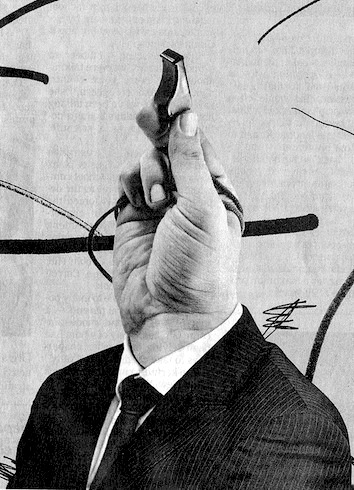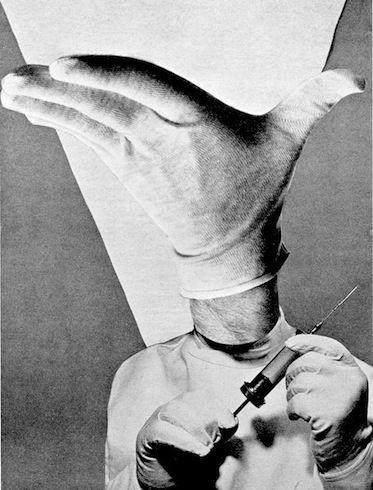May we compare images? One appeared today, the other appeared in 1967. One is a great photoshopped illustration. Which is the work of art? Is there a difference besides technique? I’d say there is.


in Flypaper by Beach Books, Texts and Documents.
Arts, Media & Culture News with 'tude
by Jan Herman
May we compare images? One appeared today, the other appeared in 1967. One is a great photoshopped illustration. Which is the work of art? Is there a difference besides technique? I’d say there is.


an ArtsJournal blog
Ah, this is not the finest year for the nyt page. Norman is far more effective. One is cartoon and about to fall flat, the NM is visceral and about to strike!
THAT is exactly the point! Thanks for saying so.
(I wanted to explain that in the blogpost, but you have no idea how complicated WORDPRESS has made posting these things. Adding text to that blogpost was a nightmare. So I gave up. The procedure used to be simple, at least for me. Then they upgraded to a widgets procedure, which was supposed to simplify posting but only made it more difficult. Which is one reason why I have posted less often. Ah, well, forgive this rant. More than you wanted to know.)
Of course they look the same. Could fool someone into thinking the same artist. One is from todays world where everything is appropriated and the other is the original. The original is a work of art the other a cheap imitation copy. So typical of today. America, in art, it seems, has lost the original meaning of original.
Duchamp at least had an idea when dealing with appropriation. Warhol,to me, was just a rip off of Duchamp and the original commercial art work.
Brilliant! As the Brits say. Thx for putting it so well.
That seamless cut and paste makes for truly uncanny images: Heartfield in San Anselmo!
Yep. He finally fled Anselmo for the desert. Among other things, he couldn’t stand being invaded by Yuppies.
I spent years in a business where well-paid craftspeople raided the inventions of often poorly rewarded artists to sell soap (or newspapers). It’s a relief to have observers around to remind us of the difference.
Well-paid craftspeople, yes. Thanks for making the point. I was talking to a stylish recent graduate of RISD (the premiere fine arts and design school in the US, the Rhode Island School of Design). He’s now working as a designer of high-end artifacts — i.e.: chairs, desks, lamps, gadgets, so forth. He is smart and totally clued in to the latest trends in art, knows art history from top to bottom, values avant-gardists to the max—and he agrees with what you are saying. But as he explains it, his work requires making things to order, which means that originality though valued is less important than fulfilling his customers’ needs. So he tries to be as original as possible within the confines of the task. It’s the difference between artist and artisan—and even that difference is blurred by the likes of Warhol, Koons, Hirst et al.
The fact alone that the original collage shows proper composition, while the cheap NYT attempt does not, is all one needs to know. Sadly, the average viewer wouldn’t notice this.